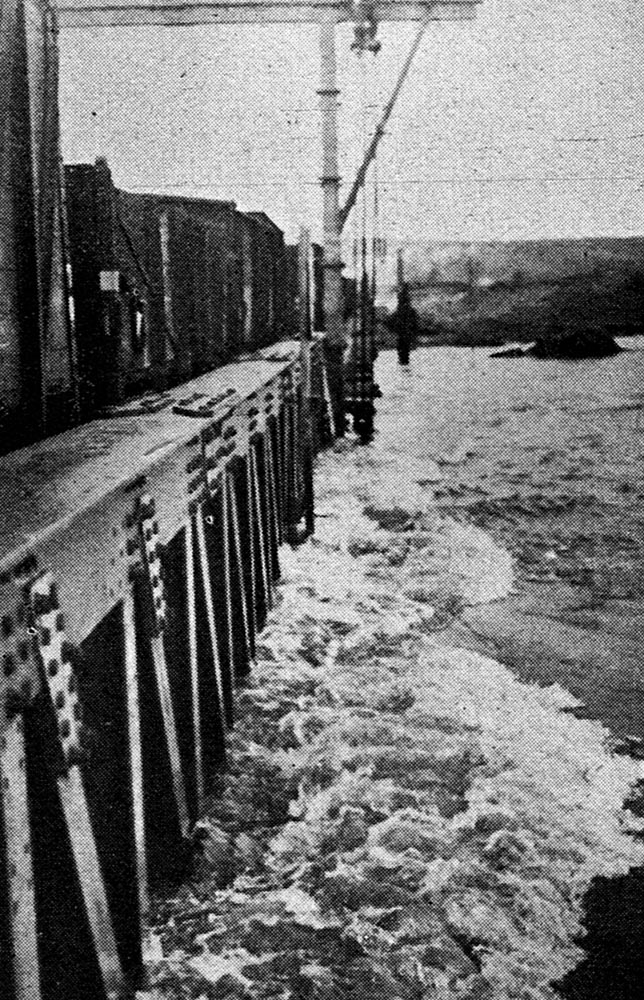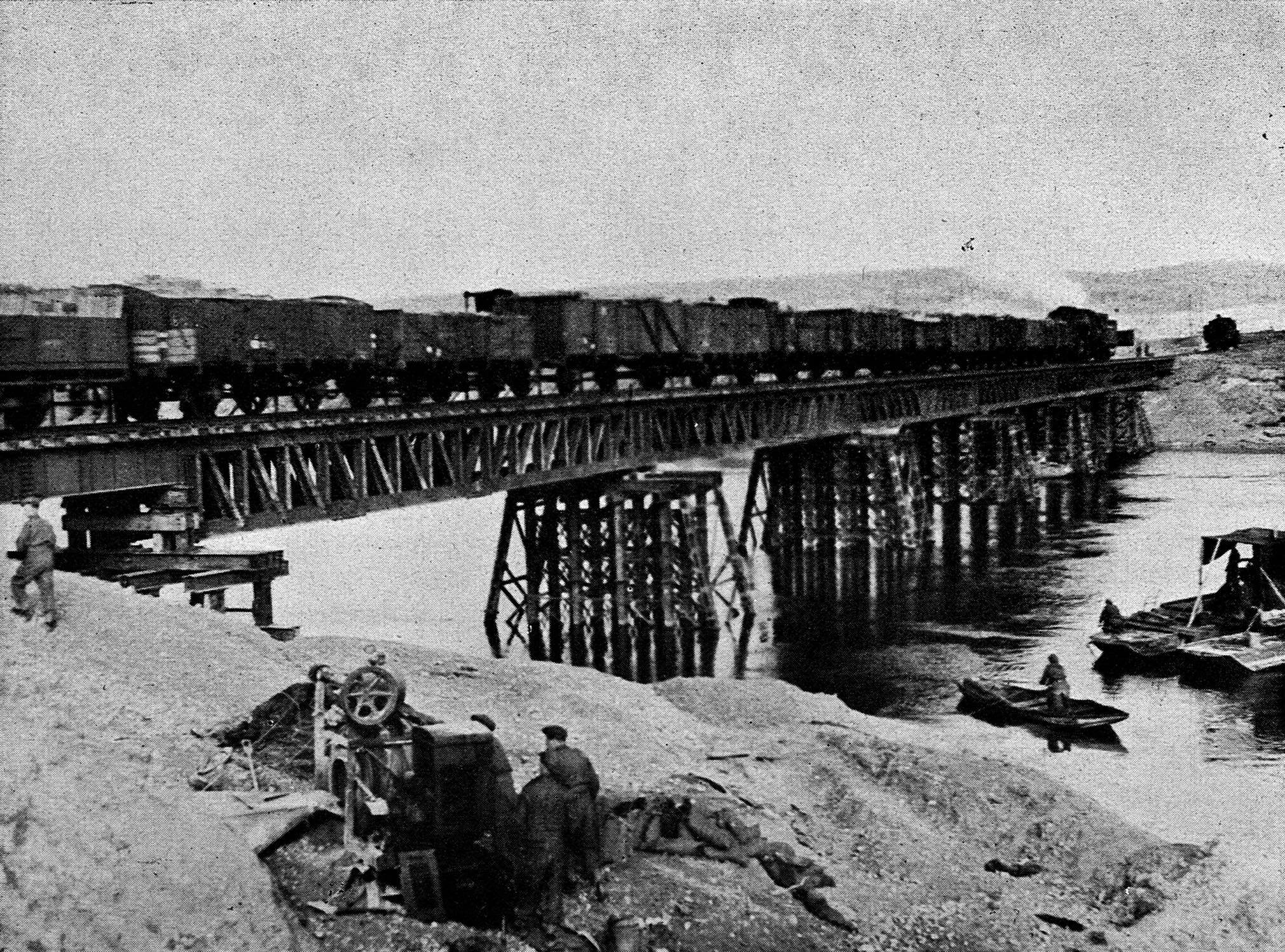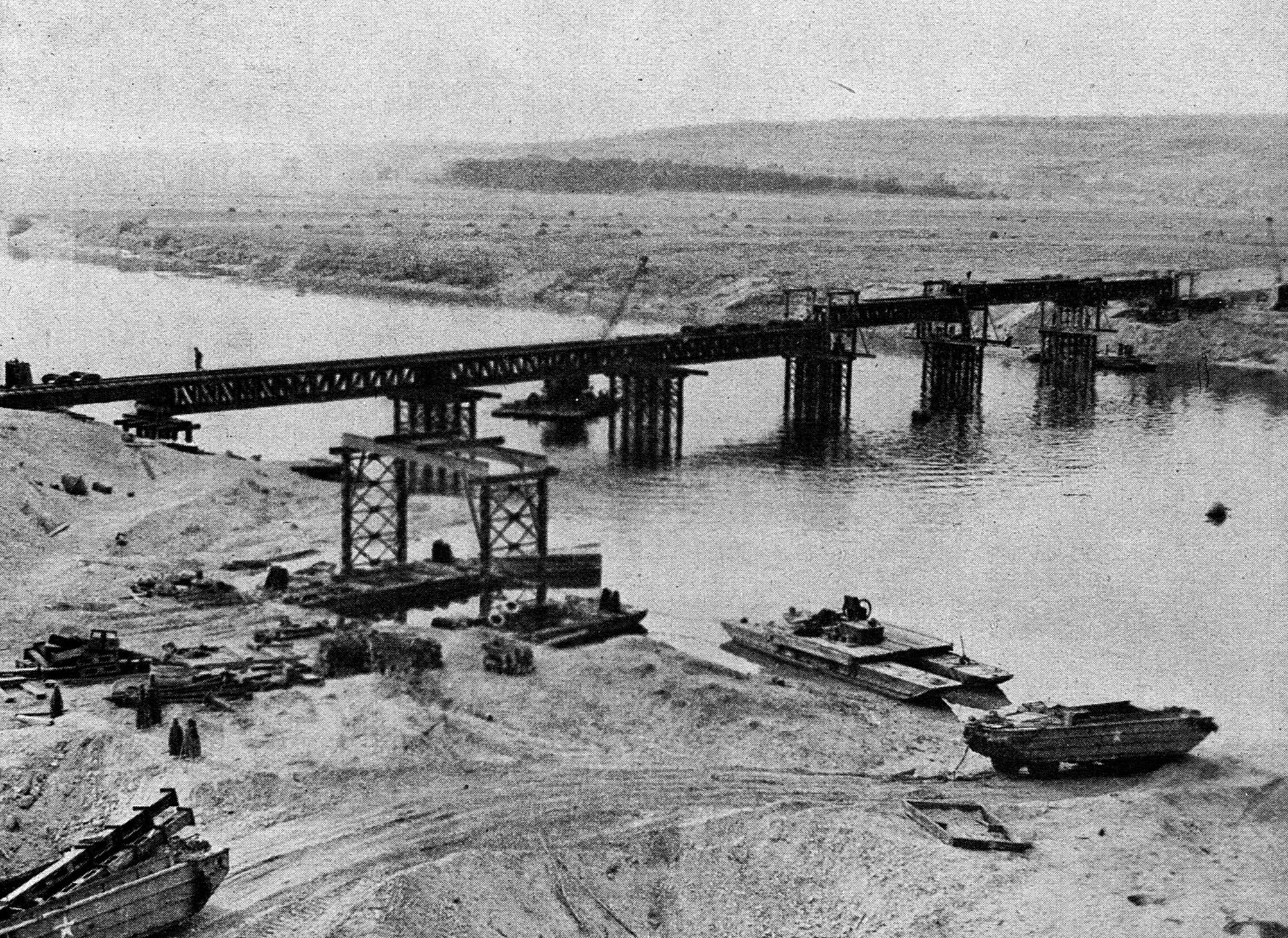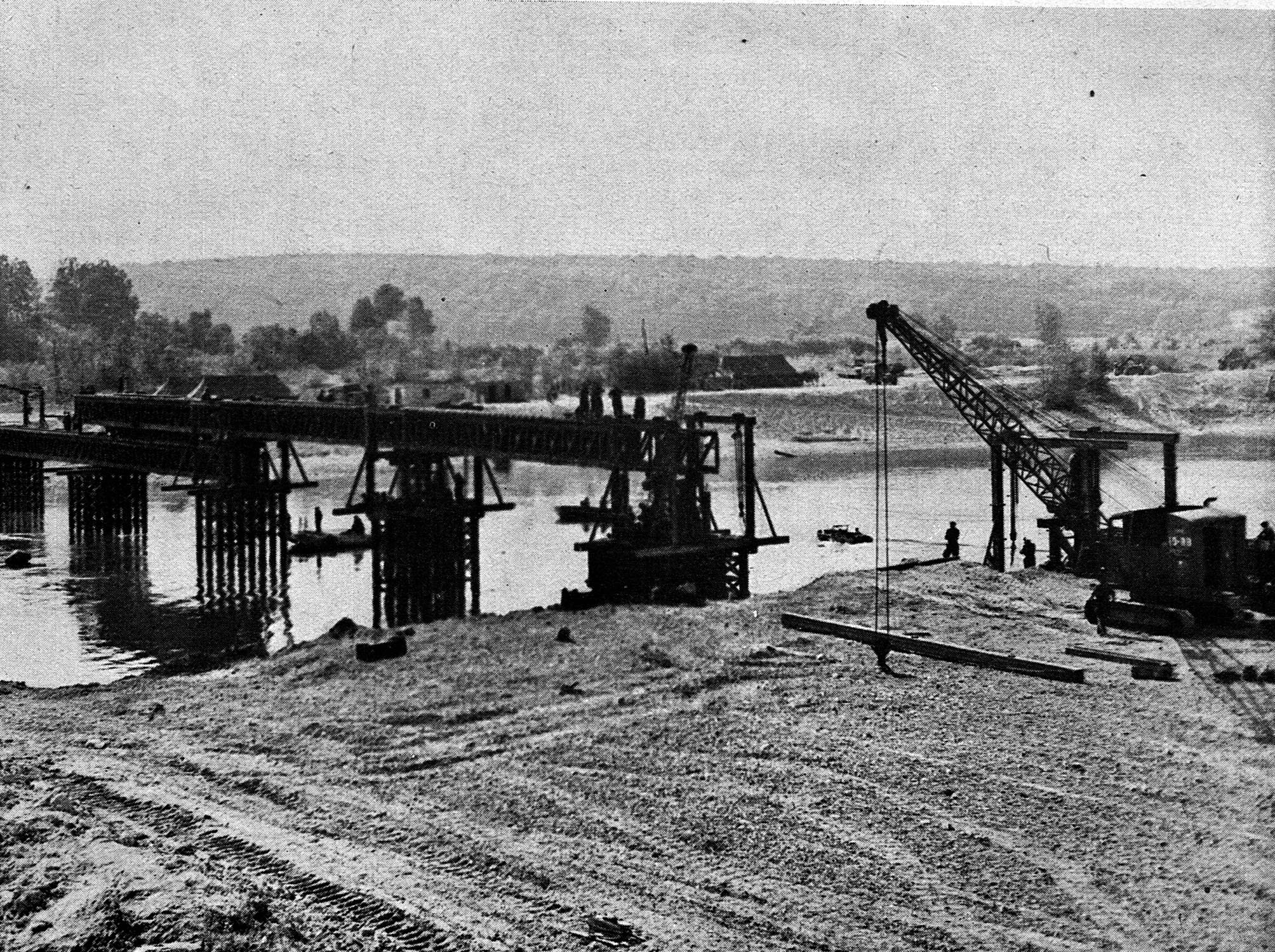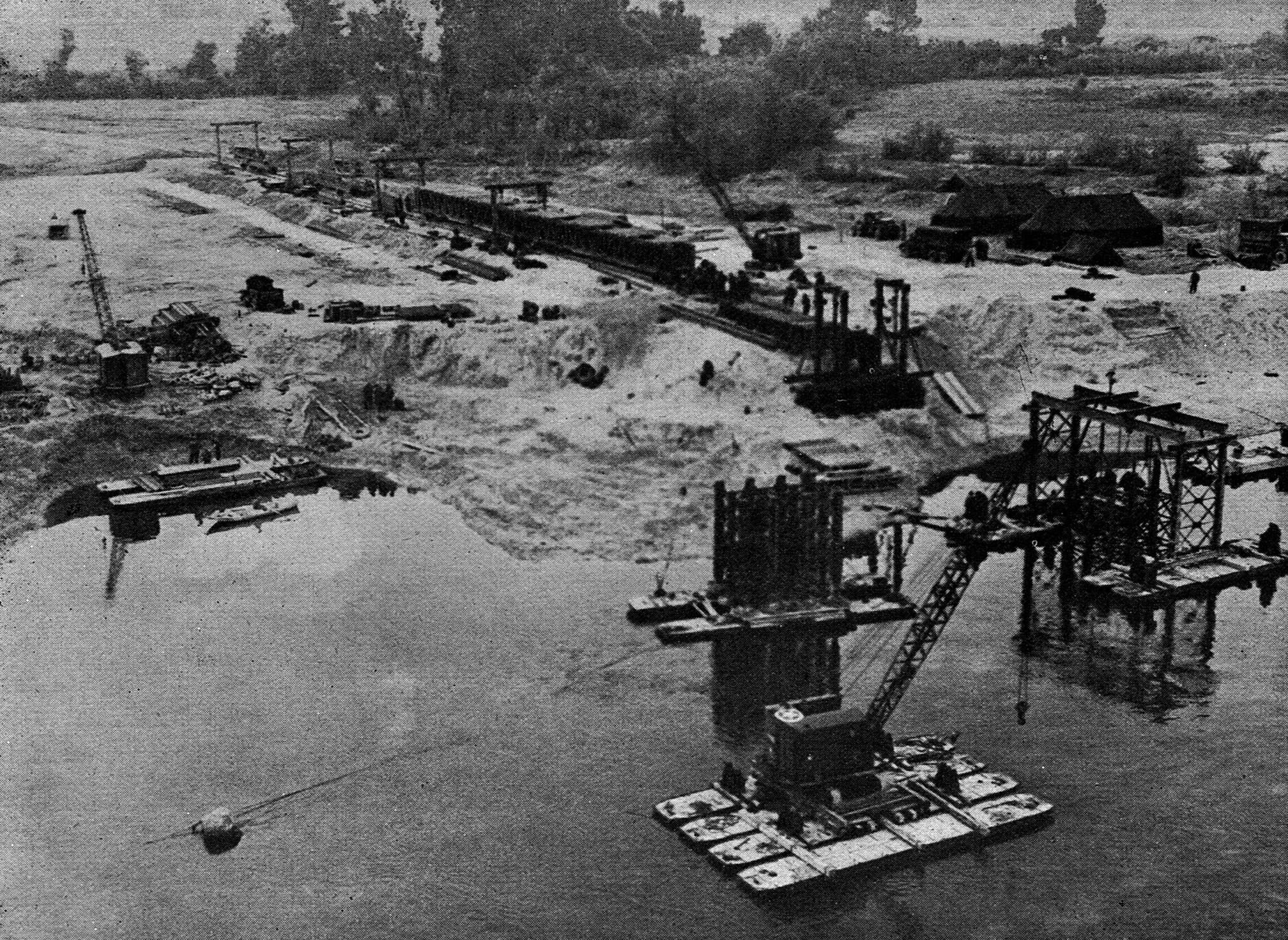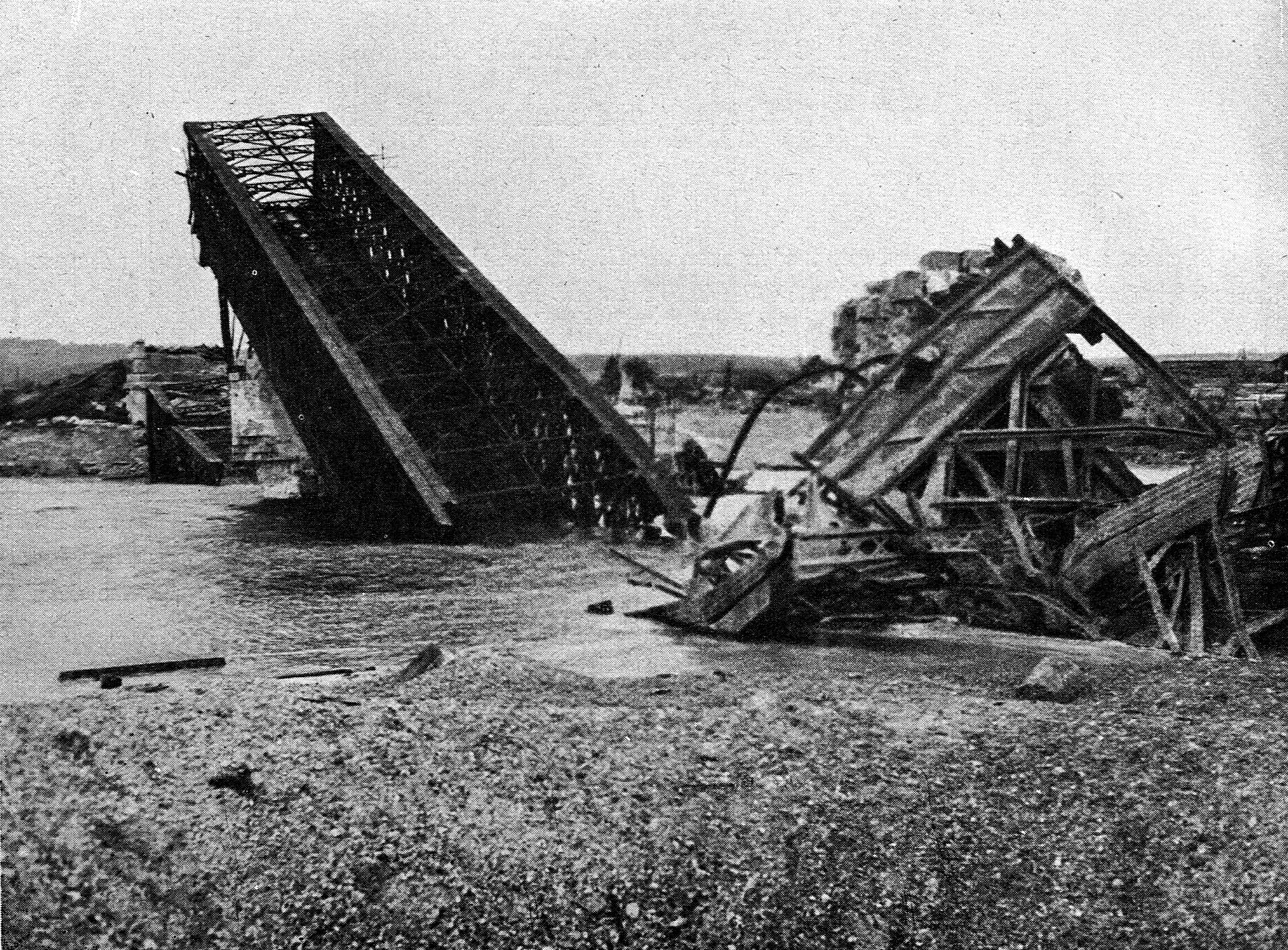 WW2 History of Europe
ww2 history
WW2 History of Europe
ww2 history
2 Railway Construction & Maintenance Group building Railway Bridge over River Seine, Le Manoir
Listing Details
Description
Railway Bridge over River Seine, Le Manoir, near Rouen, France
Constructed by 2 Railway and Maintenance Group RE
The construction of a new railway bridge over the River SEINE was the principal engineering feature of the extension of the railway L of C from NORMANDY to NE FRANCE.
At the time of the advance across the SEINE, railhead had been established at BOURGTHEROULDE on the main line CHERBOURG, CAEN, ROUEN. From this main line there were several possible approaches eastwards towards the SEINE and several possible sites for crossing the river., Towards the end of August, 1944, 2 Railway Construction and Maintenance Group RE assembled a railway engineering reconnaissance party of 21 officers and 45 other ranks and encamped outside ROUEN with the object of reconnoitering, appreciating and selecting the best route and to carry out the necessary planning at the earliest possible opportunity. The reconnaissance of the possible routes involved the walking of 156 miles of railway, the detailed examination of the five original bridges, all of which were demolished, two heavily damaged viaducts in the FORET DE LA LONDE, a tunnel blocked by a partially destroyed rail mounted battery of two guns with auxiliary vehicles, another damaged tunnel and numerous minor bridges.
The route selected was the one which could be repaired in the quickest possible time and could be operated without great difficulty. It was decided to repair the single line FORET DE LA LONDE, LOUVIERS, LE MANOIR, CHARLEVAL to join the main line from ROUEN to AMIENS at SERQUEUX and construct a new bridge over the SEINE at LE MANOIR on a deviation alignment parallel with the original bridge.
The work on the western line of approach to the new bridge involved the construction of an avoiding line joining two converging heavily damaged viaducts, the repair of which would have been a major task, and the clearance of the tunnel blocked by demolished guns and rolling stock. Both ends of the tunnel were protected by 6 ft thick concrete walls with 3 ft thick steel sliding doors covering one track. The other track was occupied by the wrecked train. The auxiliary vehicles were pulled out and the track was diverted inside the tunnel round the guns. On the eastern side of the Seine, the opening up of the line to SERQUEUX required the repair of the permanent way and the construction of a new 75 ft span bridge at GISORS.
The new SEINE bridge at LE MANOIR consists of six deck type unit construction railway bridge spans each of 75 ft span and two 40 ft sectional welded plate girder type spans. The piers are of light standard steel trestling, those built in the river being founded on adjustable camels’ feet. The lower portions of these piers were built on pontoon rafts, placed in position by a floating gantry and finally completed with a floating crane consisting of a I9 RB fitted as a crane mounted on a pontoon raft. The first three UCRB spans were launched by the cantilever method, the other three were launched together into position with the aid of one section of a launching nose.
The reconnaissance commenced on 31st August, 1944; the first material arrived at site on the evening of 6th September, 1944; the bridge was ready for testing on 21st September, 1944. By this time all the other necessary repairs and the tracklaying and heavy earthwork on the FORET DE LA LONDE avoiding line and' on the deviation embankments leading to the new bridge were completed to enable routes to be opened throughout to SERQUEUX. Incidentally, the construction of two bridges over the River SOMME near AMIENS was completed at the same time and the rail L of C was advanced to just short of the ALBERT CANAL in BELGIUM.
After completion of the bridge and when open to traffic, it was necessary to adapt the bridge to pass barge traffic on the river. During a I2-hour occupation of the line one span was converted from deck type to half through type. This span.was subsequently provided with lifting gantries to enable the span to be lifted for the passage of tugs and barges at high water.
During November and December, 1944, the river reached a height almost up to rail level during flood conditions, worse than at any time since IQIO. The bridge withstood the conditions and was kept open for traffic with very little interruption by keeping it constantly loaded with ballast wagons and propelling and hauling over trains by locomotives operating on the approaches only.
Photos:
- Placing camel's foot, piers and erection of UCRB spams embankment
- Last three spans being launched
- Completion of launch. Spans being lowered
- Heavy floods. The water approaching rail level
- During the flood, bridge loaded with ballast wagons


